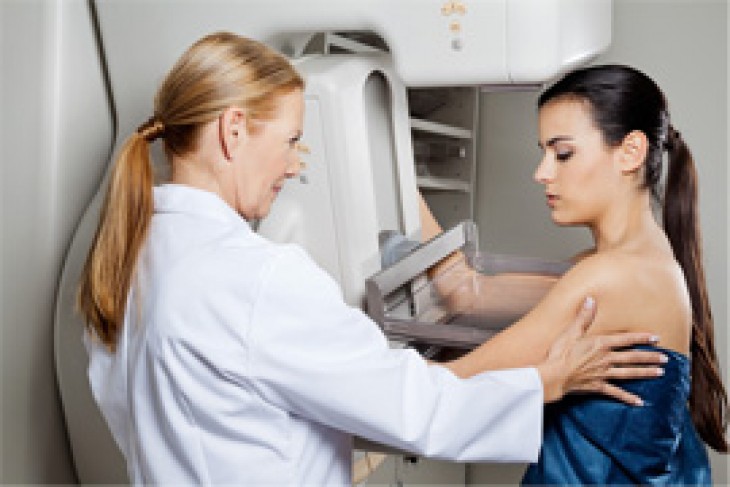More than 90 percent of mammograms in the United States are digital X-rays, a proliferation that Georgetown’s Amy Campbell, MD, traces to a 2005 paper published in the New England Journal of Medicine that found digital to be more accurate than film for women younger than 50 or with dense breasts.
Despite the advances, digital mammography still misses about 17 percent of breast cancers and as many as 30 percent depending on breast density and other factors, according to the Susan G. Komen Foundation
Radiologists and other researchers worldwide are working not only to improve the numbers but to create a technology that is quick, safe, cost effective, comfortable for both patients and radiologists and ideally non-invasive.
Here, we highlight a few technologies in the pipeline.
Tomosynthesis
Digital breast tomosynthesis mammography (DBT) was developed to improve cancer detection in women with dense breast tissue, and is “the current trend in breast imaging” as more facilities move to use this technology, according to Cleveland Clinic radiologist Laura Shepardson, MD.
While conventional digital X-rays have proven effective in detecting micro-calcifications, Shepardson says, tomosynthesis’ thin-section display should improve radiologists’ abilities to visualize and diagnose subtle areas of architectural distortion and small masses, which are often harder to see on conventional four-view mammography, particularly for patients with denser breasts.
Controversial and challenging, cancer detection in dense breasts has been described as “the Achilles Heel of screening mammography” by Mark A. Helvie, MD, in a September 2010 article in Radiology Clinics of North America. Nearly all cancers will show up in images of fatty breasts, but only half will be visible in extremely dense breasts, he says, describing the dense tissue as “masking or camouflaging” the cancer.
With tomosynthesis, explains Campbell, chief of breast imaging at MedStar Georgetown University Hospital, the machine first would take 2D digital X-ray images of the compressed breast as usual, and then move over the compressed breast in an arc taking multiple images, which allows the computer to produce a 3D image of the breast in one millimeter slices.
The additional tomosynthesis procedure does expose the patient to additional radiation, but Shepardson says the increase in dose likely would be offset by a decrease in need for additional diagnostic imaging to discern overlapping tissue from true pathology.
Campbell says she expects tomosynthesis will become more widely available depending on the outcome of several, upcoming randomized trials. One vendor, Hologic Inc., received FDA approval for tomosynthesis in 2011; several other vendors are seeking approval.
Photon Counting
Developed in the 1980s, photon counting scans the breast using about one-third of the radiation dose of regular mammography–0.6mGy vs.1.7mGy for standard mammography, explains John M. Lewin, MD, a radiologist with Diversified Radiology of Colorado.
The exam requires a few extra seconds of breast compression, but Lewin says he is not convinced the lower radiation dose will benefit most women undergoing mammography.
“We know radiation given to the breast between puberty and age 30 increases your risk of breast cancer,” he says. Beyond age 30, he says, “there is no measurable effect.”
Photon counting had a 76 percent cancer detection rate compared with 59 percent for other screening units, according to data analysis from a 2014 study out of Germany and published in Radiology.
But Lewin points out that it’s impossible to know whether the results were because of the technology, the radiologists, the population or other factors.
Photon counting has been FDA-approved for one vendor, Royal Philips Electronics, and Shepardson points out that the technology would be costly since it requires an entirely new detector.




